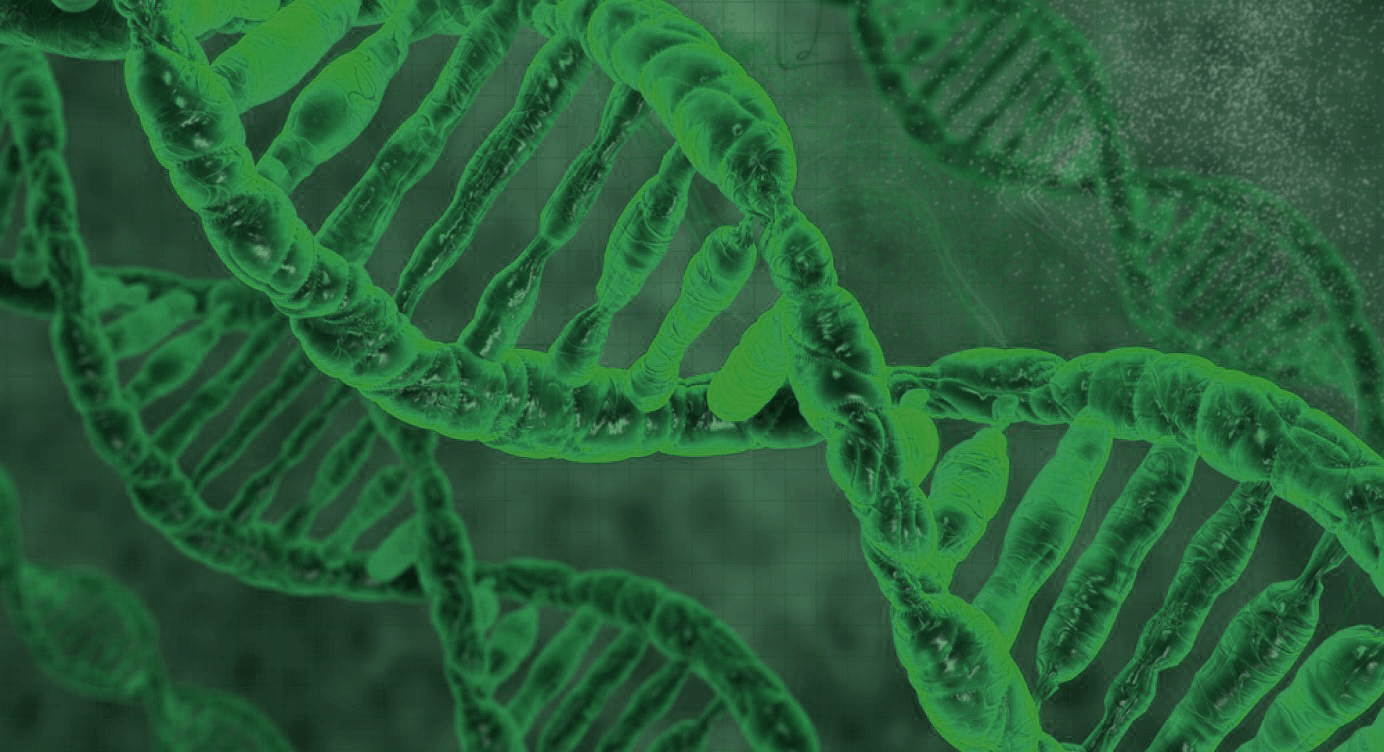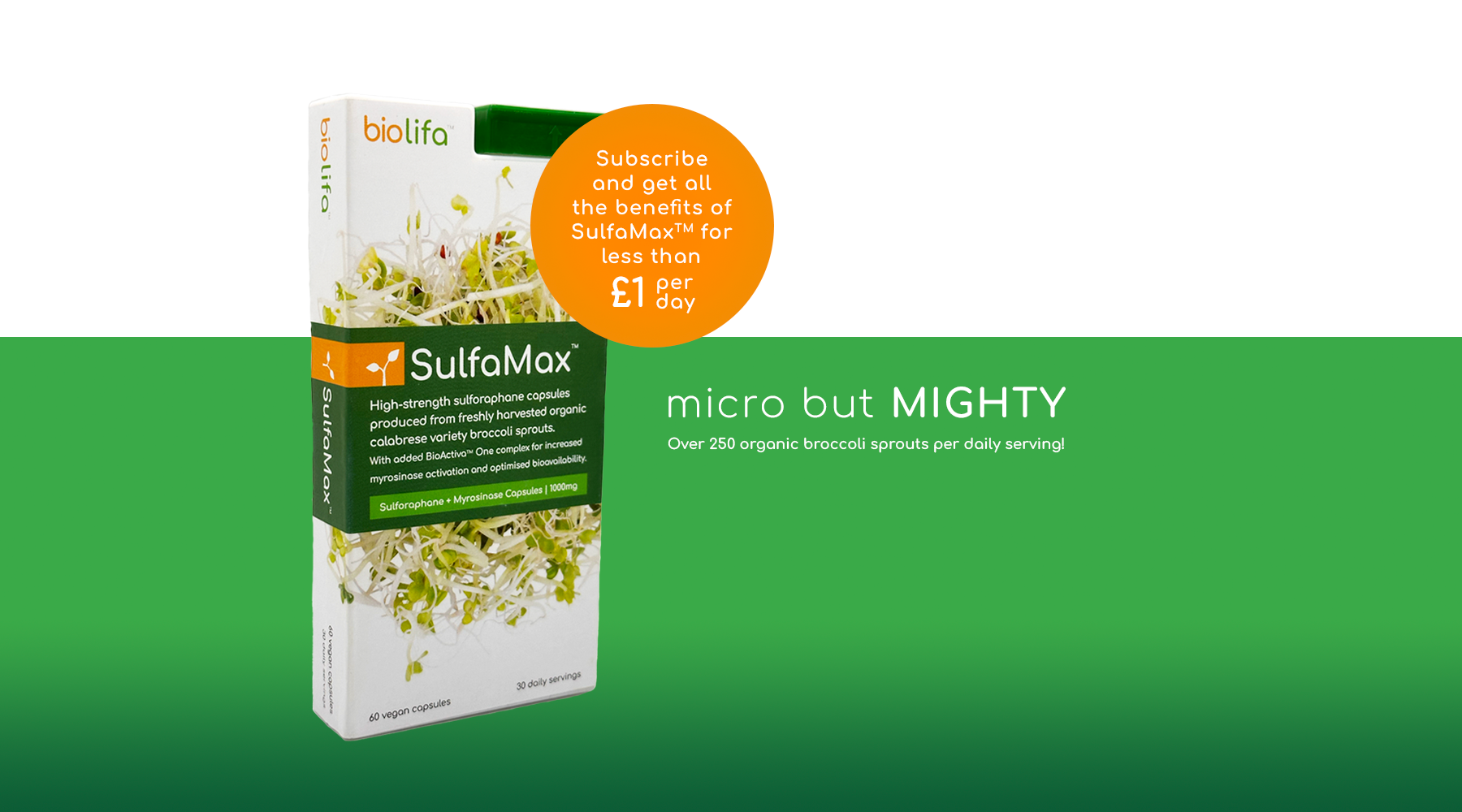Sulforaphane and the Nrf2 Pathway:
Unleashing the Cellular Defence Mechanism
Unleashing the Cellular Defence Mechanism
The intricate workings of our body rely on a complex network of molecular pathways that regulate cellular functions. One important function is to take in nutrients from food and convert those nutrients into energy. Less well known, but critically important, is the Nrf2 pathway, which plays a vital role in cellular defence and protection against oxidative stress.
Sulforaphane is a naturally occurring compound found in cruciferous vegetables such as broccoli,
cabbage, kale and brussel sprouts, and has gained significant attention for its ability to activate the Nrf2 pathway.
Understanding the Nrf2 Pathway:
The Nrf2 (nuclear factor erythroid 2-related factor 2) pathway is a complex signaling system present in nearly all the body’s cells. It acts as a master regulator of cellular defence mechanisms, enabling a coordinated response to oxidative stress and inflammation, which is the common feature of most chronic diseases.
Under normal conditions, Nrf2 is bound to a protein called Keap1, which promotes its degradation. However, when Nrf2 is exposed to various stressors, such as Reactive Oxygen Species (ROS), electrophiles, or inflammatory signals, it is liberated from Keap1, enabling it to translocate into the cell nucleus.
Once in the nucleus, Nrf2 binds to Antioxidant Response Elements (AREs) within the DNA, initiating the transcription of a wide array of cytoprotective genes. These genes encode various antioxidant enzymes, detoxification enzymes, and anti-inflammatory proteins.
For the body to survive and function normally it needs to maintain a state of balance. By upregulating these defence mechanisms, the Nrf2 pathway plays a crucial role in neutralising harmful molecules thereby maintaining cellular homeostasis.
Sulforaphane's Impact on the Nrf2 Pathway:
Sulforaphane, found in its most potent form in young broccoli sprouts, is a phytochemical that has been recognised as a potent activator of the Nrf2 pathway. When sulforaphane enters the body, it undergoes a series of enzymatic reactions that convert it into its bioactive form. Once activated, sulforaphane interacts with Keap1, preventing its binding to Nrf2 and subsequent degradation. As a result, Nrf2 accumulates and translocates to the nucleus, initiating the transcription of cytoprotective genes.
Studies have demonstrated that sulforaphane's impact on the Nrf2 pathway leads to a wide range of cellular benefits. Compared with widely used phytochemical-based supplements such as curcumin, silymarin and resveratrol, sulforaphane more potently activates Nrf2 and, due to its lipophilic nature and low molecular weight, has significantly higher bioavailability.
Firstly, it enhances the production of antioxidant enzymes, including superoxide dismutase (SOD), catalase, and glutathione peroxidase, which neutralise harmful free radicals and reduce oxidative stress. This increased antioxidant capacity helps protect cellular components, such as DNA, proteins, and lipids, from damage caused by oxidative stress.
It also promotes the activation of detoxification enzymes, such as GSTs and NQ01. (Glutathione
S-transferases and NAD(P)H:quinone oxidoreductase 1). These enzymes are responsible for metabolizing and eliminating harmful toxins and carcinogens from the body. By enhancing their activity, sulforaphane aids in the detoxification process, reducing the risk of cellular damage and chronic diseases.
Impact of Nrf2 Activation on Cellular Health:
Activation of the Nrf2 pathway through sulforaphane supplementation has been associated with numerous health benefits. Firstly, the upregulation of antioxidant enzymes helps combat oxidative stress, a process implicated in aging, neurodegenerative disorders, cardiovascular diseases, and cancer. By reducing oxidative damage, sulforaphane can potentially slow down the aging process and protect against age-related diseases.
Furthermore, sulforaphane's ability to activate the Nrf2 pathway has shown promising results in various cellular processes. Research suggests that sulforaphane can modulate inflammation by inhibiting the production of pro-inflammatory molecules and promoting the release of anti-inflammatory cytokines. This anti-inflammatory effect is particularly relevant in conditions such as arthritis, asthma, and inflammatory bowel disease.
The Nrf2 pathway's activation by sulforaphane also contributes to the maintenance of mitochondrial function. Mitochondria are the powerhouses of the cell, responsible for generating energy in the form of adenosine triphosphate (ATP). However, mitochondrial dysfunction and the production of excessive ROS can lead to cellular damage and contribute to the development of various diseases. Sulforaphane's stimulation of the Nrf2 pathway enhances mitochondrial biogenesis and improves the efficiency of oxidative phosphorylation, thereby protecting against mitochondrial dysfunction.
Other studies have highlighted the role of sulforaphane in neuroprotection. The Nrf2 pathway activation by sulforaphane promotes the expression of genes associated with neuronal survival and protection against neurodegenerative diseases. These studies have shown promising results in models of Parkinson's disease, Alzheimer's disease, and stroke, demonstrating sulforaphane’s neuroprotective potential.
Sulforaphane's impact on the Nrf2 pathway extends further, to cancer prevention and treatment. The activation of Nrf2 by sulforaphane induces the expression of genes involved in detoxification and elimination of carcinogens, as well as inhibiting the growth of cancer cells and inducing their apoptosis (programmed cell death). This makes sulforaphane a promising candidate for chemoprevention and adjunct therapy in cancer treatment.
In conclusion, sulforaphane possesses remarkable abilities to activate the Nrf2 pathway. This activation leads to the upregulation of various cytoprotective genes, enhancing antioxidant defences, detoxification processes, and anti-inflammatory responses. The resulting impact on cellular health is vast, encompassing reduced oxidative stress, improved mitochondrial function, neuroprotection, and potential cancer prevention.
Sulforaphane's influence on the Nrf2 pathway represents a fascinating avenue for promoting overall well-being and may pave the way for novel therapeutic approaches in combating numerous diseases. Incorporating sulforaphane-rich foods into our diet or taking daily sulforaphane supplements could offer the means to unlock the powerful potential of the Nrf2 pathway and optimise our cellular defence mechanisms.
A wide spectrum of positive health benefits
Visit the Sulforaphane Knowledge Centre to discover the incredible benefits that sulforaphane has on your health and wellbeing:
-

The Science
SulfaMax.com/ScienceLearn how sulforaphane has the power to positively affect your entire body.
-

The Goodness
SulfaMax.com/GoodnessAs natural as eating fresh organic broccoli sprouts but with twice the strength.
-

The Health Benefits
SulfaMax.com/HealthSee how sulforaphane can totally transform your health and wellbeing.






